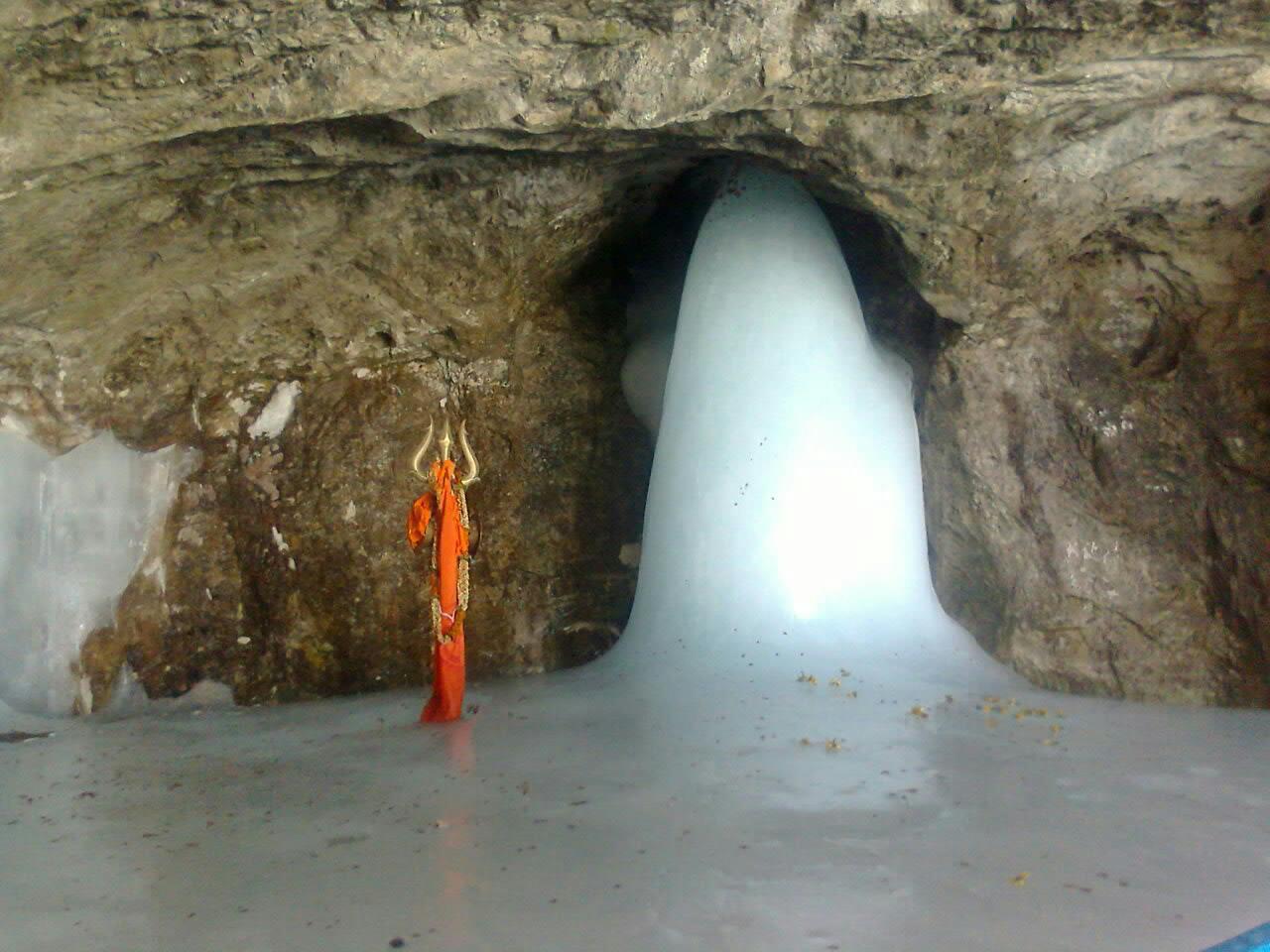The Amarnath cave has been a place of worship since times immemorial. There are references to the legendary kingAryaraja (ascribed dates 300 BCE) who used to worship a lingam formed of ice in Kashmir.
The book Rajatarangini (Book VII v.183) refers to Amareshwara or Amarnath.
It is believed that Queen Suryamathi in the 11th century AD gifted trishuls, banalingas and other sacred emblems to this temple.
The separatists in Kashmir and their "secular supporters are trying to spread the myth that the Amaranth Yatra is of a recent origin.
They claim that it started only after a Muslim shepherd of Batakot, a certain Buta Malik, originally discovered the Amarnath cave when he lost his flock and found that it had strayed into the sacred spot some 150 years ago.
There is no documentary proof of this so-called discovery, the story having probably been concocted to give credit to Muslims for having started the most popular Hindu pilgrimage of Kashmir.
There is ample and conclusive historical evidence, on the other hand, to prove that the holy cave and the ice lingam were known to the people since very ancient times and have been continuously and regularly visited by pilgrims not only from Kashmir but also from different parts of India.
Amarnath cave is a Hindu shrine located in Jammu and Kashmir, India. It is dedicated to Lord Shiva. This holy shrine also called as one among 51 Shakthi peethas.
Jyotirlinga of lord Shiva is in the holy cave of Amarnath in Kashmir. There is also a Ganesh and a Parvati Peeth formed of snow. This Parvati peeth is the Shaktipeeth place. On Poornima of Shukla Paksha, Shravan month Amarnath as well as Him Shaktipeeth can be viewed and worshipped. Here the throat of Mata Sati fell. The people worship this body part and the ornaments of Mata Sati. Here Shakti is called Mahamaya and Bhairav is called Trisandhyeshwar.
The cave is situated at an altitude of 3,888 m (12,756 ft), about 141 km (88 mi) from Srinagar, the capital of Jammu and Kashmir and reached through Pahalgam town. The shrine forms an important part of Hinduism,and is considered to be one of the holiest shrines in Hinduism.
Inside the 40 m (130 ft) high Amarnath cave, the stalagmite is formed due to freezing of water drops that fall from the roof of the cave on to the floor and grows up vertically from the cave floor. It is considered to be a Shiva Linga by Hindus.
The size of Shiva lingam at Amarnath Cave increases and decreases with the different phases of the moon. But there is no scientific evidence to support this belief.
Along with Shiva lingam, two more ice formations exist in the cave that are believed to be of Maa Parvati and their son Ganesha.
The Amarnath Cave has a special significance in the Hindu religion. As per legend, Lord Shiva had chosen this cave to describe the secrets of immortality and formation of the universe to Maa Parvati.Once Maa Parvati asked Lord Shiva that when He started wearing the beads of heads.
On this, Lord Shiva replied whenever you were born. Maa Parvati asked why are you immortal and I keep on dying again and again Lord Shiva said that this is due to the Amar Katha. Maa Parvati insisted to hear that Amar Katha and after convincing Lord for a long time, Lord Shiva decided to narrate that story to Maa Parvati.
Do:
-
Do pray your Ishta Devata before pilgrimage to Temple.
-
Do contact Temple Devasthanam information centre for enquiry, temple information and for Pooja details etc.
-
Do reserve your travel and accommodation at Temple well in advance.
-
Do bath and wear clean clothes before you enter the temple.
-
Do concentrate on God and Goddess inside the temple.
-
Do maintain silence and recite your Istamantram to yourself inside the temple.
-
Do observe ancient custom and traditions while in Temple.
-
Do respect religious sentiments at Temple.
-
Do deposit your offerings in the hundi only.
Don't s:
-
Do not come to Temple for any purpose other than worshipping of God and Goddess.
-
Do not smoke at Temple.
-
Do not consume alcoholic drinks at Temple.
-
Do not eat non-vegetarian food in the Kshetram.
-
Do not approach mediators for quick Darshanam. It may cause inconvenient to others.
-
Do not carry any weapon inside the temple.
-
Do not wear any head guards like helmets, caps, turbans and hats inside the temple premises.
-
Do not perform Sastanga Pranama inside the Sanctum Sanctorum.
-
Do not take much time while performing Sparsa Darshanam to God in Garbhagriha.
-
Do not buy spurious prasadams from street vendors.
-
Do not encourage beggars at Temple.
-
Do not spit or create nuisance in the premises of the temple.
